Dacia Spring VS Mercedes EQV – Specs, Efficiency & Price Comparison
Which model is the better choice – the Dacia Spring or the Mercedes EQV? We compare performance (65 HP vs 204 HP), boot capacity (308 L vs 1410 L), efficiency (13.20 kWh vs 27.10 kWh), and of course, the price (14500 £ vs 51300 £).
Find out now which car fits your needs better!
The Dacia Spring (SUV) is powered by a Electric engine and comes with a Automatic transmission. In comparison, the Mercedes EQV (Bus) features a Electric engine and a Automatic gearbox.
When it comes to boot capacity, the Dacia Spring offers 308 L, while the Mercedes EQV provides 1410 L – depending on what matters most to you. If you’re looking for more power, you’ll need to decide whether the 65 HP of the Dacia Spring or the 204 HP of the Mercedes EQV suits your needs better.
There are also differences in efficiency: 13.20 kWh vs 27.10 kWh. In terms of price, the Dacia Spring starts at 14500 £, while the Mercedes EQV is available from 51300 £.
Compare all the key specs now and find out which model fits your lifestyle best!
Dacia Spring
The Dacia Spring stands out as an affordable and environmentally friendly option in the electric vehicle market, combining practicality with a compact design ideal for urban settings. Its minimalist interior, while basic, provides all the essential features needed for a comfortable drive, reflecting its cost-effective approach. The vehicle's performance suits city driving, making it an appealing choice for those seeking an entry-level electric car.
details @ dacia-presse.de
@ dacia-presse.de
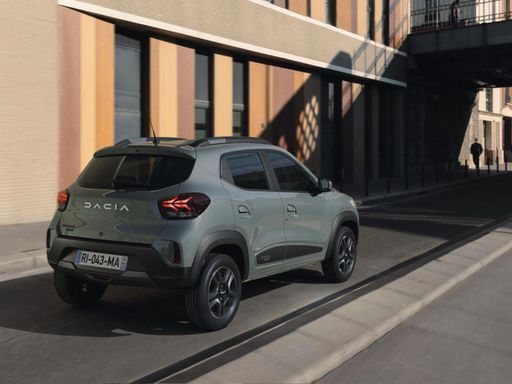 @ dacia-presse.de
@ dacia-presse.de
 @ dacia-presse.de
@ dacia-presse.de
Mercedes EQV
The Mercedes-Benz EQV stands out as a versatile electric vehicle combining luxury with practicality, making it an ideal choice for environmentally conscious families. With its spacious interior and sleek design, it offers a premium driving experience that aligns with the brand's reputation for quality and innovation. As a sustainable option in the realm of people carriers, it exhibits the perfect balance between cutting-edge technology and everyday usability.
details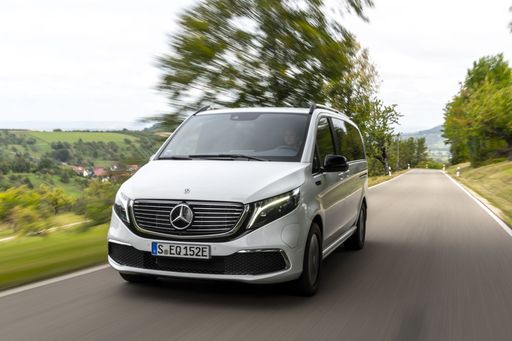 @ group-media.mercedes-benz.com
@ group-media.mercedes-benz.com
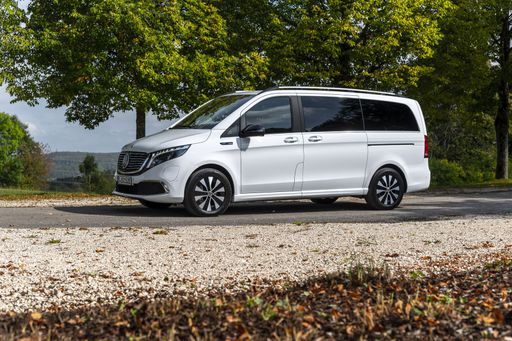 @ group-media.mercedes-benz.com
@ group-media.mercedes-benz.com
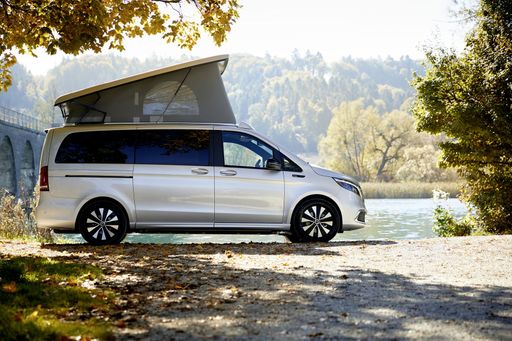 @ group-media.mercedes-benz.com
@ group-media.mercedes-benz.com
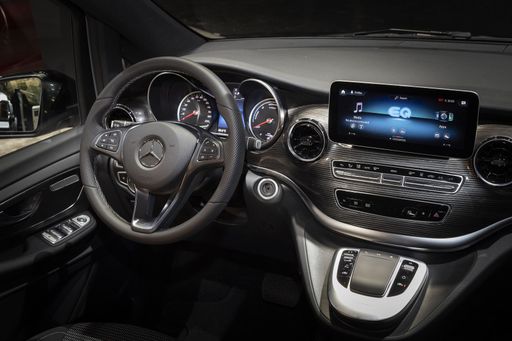 @ group-media.mercedes-benz.com
@ group-media.mercedes-benz.com
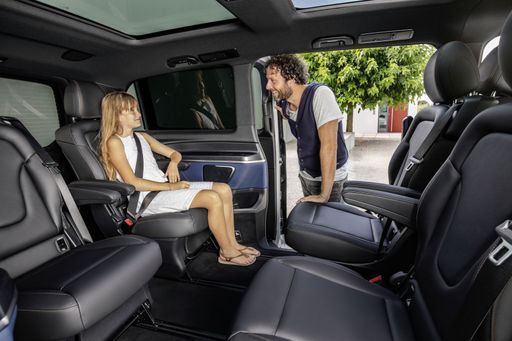 @ group-media.mercedes-benz.com
@ group-media.mercedes-benz.com

|

|
|
|
|
Costs and Consumption |
|
|---|---|
|
Price
14500 - 17100 £
|
Price
51300 - 54900 £
|
|
Consumption L/100km
-
|
Consumption L/100km
-
|
|
Consumption kWh/100km
13.2 - 14.1 kWh
|
Consumption kWh/100km
27.1 - 27.4 kWh
|
|
Electric Range
225 - 228 km
|
Electric Range
244 - 365 km
|
|
Battery Capacity
26.80 kWh
|
Battery Capacity
60 - 90 kWh
|
|
co2
0 g/km
|
co2
0 g/km
|
|
Fuel tank capacity
-
|
Fuel tank capacity
-
|
Dimensions and Body |
|
|---|---|
|
Body Type
SUV
|
Body Type
Bus
|
|
Seats
4
|
Seats
6
|
|
Doors
5
|
Doors
5
|
|
Curb weight
1013 - 1050 kg
|
Curb weight
2666 - 2863 kg
|
|
Trunk capacity
308 L
|
Trunk capacity
1030 - 1410 L
|
|
Length
3701 mm
|
Length
5140 - 5370 mm
|
|
Width
1583 mm
|
Width
1928 mm
|
|
Height
1519 mm
|
Height
1920 - 1923 mm
|
|
Payload
265 - 302 kg
|
Payload
637 - 834 kg
|
Engine and Performance |
|
|---|---|
|
Engine Type
Electric
|
Engine Type
Electric
|
|
Transmission
Automatic
|
Transmission
Automatic
|
|
Transmission Detail
-
|
Transmission Detail
-
|
|
Drive Type
Front-Wheel Drive
|
Drive Type
Front-Wheel Drive
|
|
Power HP
44 - 65 HP
|
Power HP
204 HP
|
|
Acceleration 0-100km/h
13.7 - 19.1 s
|
Acceleration 0-100km/h
10.3 - 12.1 s
|
|
Max Speed
125 km/h
|
Max Speed
140 km/h
|
|
Torque
113 - 125 Nm
|
Torque
365 Nm
|
|
Number of Cylinders
-
|
Number of Cylinders
-
|
|
Power kW
33 - 48 kW
|
Power kW
150 kW
|
|
Engine capacity
-
|
Engine capacity
-
|
General |
|
|---|---|
|
Model Year
2024
|
Model Year
2024
|
|
CO2 Efficiency Class
A
|
CO2 Efficiency Class
A
|
|
Brand
Dacia
|
Brand
Mercedes-Benz
|
Dacia Spring
The Revolution of Affordable Electric Mobility: The Dacia Spring
The automotive world has witnessed remarkable advancements in electric vehicles (EVs), with the Dacia Spring emerging as a noteworthy contender in the affordable segment. Combining efficiency, affordability, and practicality, the Spring offers an intriguing prospect for eco-conscious individuals and city dwellers alike.
Powertrain and Performance: A Look Under the Hood
The Dacia Spring is equipped with an electric motor that delivers between 44 to 65 PS, translating into a versatile driving experience tailored to urban landscapes. It operates on a front-wheel-drive system, ensuring a familiar and manageable handling experience.
Dacia Spring's electric engine is paired with an automatic transmission, utilising a reduction gearbox. This setup allows for smooth acceleration and a top speed of 125 km/h, ensuring that everyday driving scenarios are handled with ease.
Efficiency and Range: Eco-Friendly without Compromise
Efficiency is a cornerstone of the Dacia Spring's design, boasting an energy consumption of just 13.2 to 14.1 kWh per 100 km. When fully charged, its 26.8 kWh battery offers a respectable range of 225 to 228 km, making it ideal for daily commutes and short trips.
Furthermore, the Spring takes pride in its commendable CO2-efficiency class A, emphasising its commitment to reducing environmental footprint with a zero-emission profile.
Design and Practicality: Compact yet Comprehensive
Lying in the SUV category, the Dacia Spring is compact with dimensions of 3701 mm in length and 1583 mm in width, making it a perfect match for urban environments where space is at a premium. Despite its modest size, it provides a generous boot space of 308 litres, ensuring practicality isn’t sacrificed.
Comfort and Interior: For the Everyday Journey
The Dacia Spring comfortably seats up to four passengers. The cabin offers a minimalist yet functional design, available in multiple trim lines including Essential, Expression, and Extreme, allowing customers to choose according to their taste and requirement.
With its ergonomic layout and simplicity, the interior is crafted to enhance the driving experience by focusing on essential needs, avoiding unnecessary distractions.
Affordability and Accessibility: Breaking Barrier
The Dacia Spring stands out in the electric vehicle market due to its affordability, with prices ranging from 16,900 to 19,900 €. This ensures that environmentally friendly transportation is accessible to a broader audience.
Additionally, the Spring allows for cost-effective maintenance and operational expenses, offering monthly running costs between 570 to 599 € and cost per km between 22.8 to 24 cents, making it an economical choice in the long run.
Final Thoughts: The Future of Urban Mobility
In summary, the Dacia Spring serves as a testament to how electric vehicles can be both affordable and practical, without compromising on essential features. Whether it is for the eco-conscious urbanite or those looking for a cost-effective daily driver, the Spring is positioned as a viable solution for navigating the future of urban mobility.
Mercedes EQV
Introduction to the Mercedes-Benz EQV
The Mercedes-Benz EQV is the latest addition to the luxury automotive lineup, offering a unique blend of sustainability, performance, and innovative design. This all-electric MPV (multi-purpose vehicle) is designed to cater to the demands of modern family life and business travel, making zero-emission driving a refined and effortless experience.
Performance and Efficiency
At the heart of all EQV models is a robust electric motor producing 204 PS, or 150 kW, which ensures responsive acceleration and a smooth driving experience. With the option of either a 60 kWh or 90 kWh battery capacity, the EQV offers an impressive range of between 244 to 365 kilometres on a single charge, depending on your chosen configuration.
The electric motor's torque of 365 Nm, combined with a state-of-the-art automatic transmission system, ensures seamless gear shifts and optimal energy efficiency. The EQV boasts a consumption of 27.1 to 27.4 kWh per 100 kilometres, making it one of the most efficient vehicles in its class.
Innovative Technology
Mercedes-Benz has equipped the EQV with cutting-edge technology to enhance both driver convenience and passenger comfort. The integrated MBUX (Mercedes-Benz User Experience) system is a highlight, offering voice control and a high-resolution display that keeps drivers connected and informed at all times.
Furthermore, the EQV features advanced driver assistance systems designed to enhance safety and ease of driving. These include Active Brake Assist, Attention Assist, and Crosswind Assist, creating an optimised driving experience regardless of road conditions.
Design and Comfort
The Mercedes-Benz EQV retains the sleek and luxurious design language that is synonymous with the brand. With a length ranging from 5140 to 5370 mm, a width of 1928 mm, and a height of up to 1923 mm, the EQV provides ample space for passengers and luggage, comfortably seating up to six passengers.
The interior is thoughtfully designed with premium materials and flexible seating arrangements, allowing for a rear-seat configuration that suits varied needs, whether for family outings or business commutes. The EQV also offers a spacious boot capacity of 1030 to 1410 litres.
Environmental Impact and CO2 Efficiency
As part of Mercedes-Benz's commitment to sustainability, the EQV has an impressive CO2 efficiency class of 'A'. With zero CO2 emissions during operation, it represents an environmentally-friendly alternative for those seeking luxury without compromise.
Conclusion
The Mercedes-Benz EQV combines luxury, performance, and sustainability, setting a new benchmark for electric vehicles in the MPV segment. Whether for family or business, its advanced technology, thoughtful design, and eco-friendly credentials make it a compelling choice for discerning drivers.
The prices and data displayed are estimates based on German list prices and may vary by country. This information is not legally binding.
